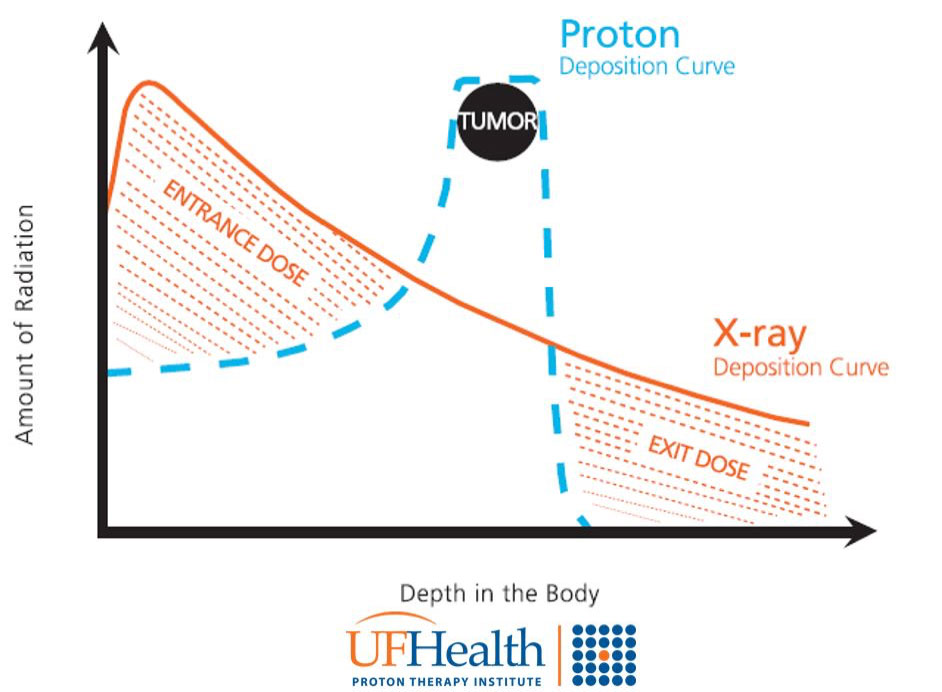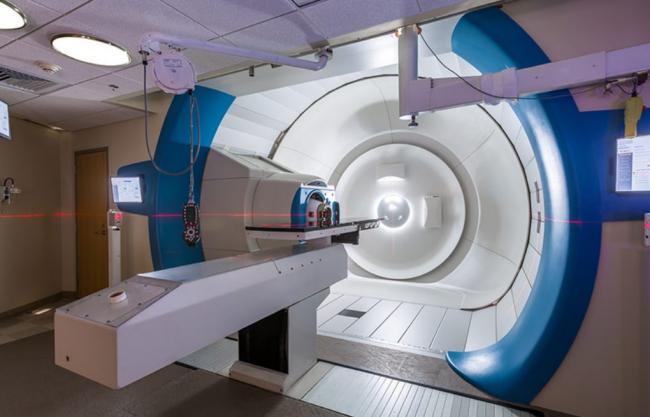Double scattering proton therapy is a form of passive scattering radiation, offering precise cancer treatment with less risk of side effects.
Precise treatment for complex cancers.
How Does Double Scattering Proton Therapy Work?
In double scattered proton radiotherapy, protons interact with two different scattering components and a spinning range modulator. The scattering components broaden and sharpen the beam to achieve a uniform and precise delivery. The spinning range modulator alters the beam’s energy according to the specific treatment plan developed by your UF Health Proton Therapy Institute team, resulting in a customized Bragg peak.
What is a Bragg peak?
The Bragg peak is burst of energy released by protons when they reach the end of their path. With double scattering beams, this can be placed at any depth in the body, delivering targeted dose of radiation directly to the tumor site.

What are the benefits of double scattering radiation?
Much like Pencil Beam Scanning, double scattering proton therapy allows your physician to deliver a precise, powerful dose of radiation that covers the tumor with minimal radiation exposure to healthy tissues – meaning less risk of side effects and a better quality of life for you.

